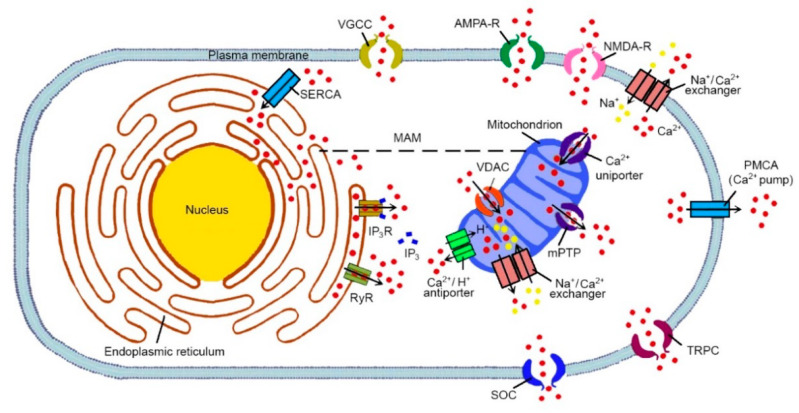Figure 1.
Calcium homeostasis in normal cells. Intracellular calcium (Ca2+) levels are finely regulated within their physiological range (10–100 nM) against steep gradients by transport of the ion to the extracellular space and cisternae of the ER, and by protein binding. Cellular calcium influx through the plasma membrane is largely mediated by different types of Ca2+ channels (NMDA-R, AMPA-R, VGCC, SOC and TRPC channels) and, under exceptional circumstances, including strong depolarization or the presence of high intracellular sodium (Na+) concentrations, the Na+/Ca2+ exchanger. Ca2+ may also be released into the cytoplasm from the ER, through IP3R and RYR. Cytosolic Ca2+ increase is counterbalanced by different systems. In particular, the PMCA, Na+/Ca2+ exchangers, and SERCA restore physiological calcium levels. The excess of intracellular Ca2+ can also be taken up by mitochondria through mitochondrial Ca2+ uniporters and VDAC. Ca2+ can be also released back into the cytosol through the mitochondrial Na+/Ca2+ exchangers, which can also reverse its mode of operation, allowing the Ca2+ entry into the mitochondrial matrix, the Ca2+/H+ antiporter and mPTP.

